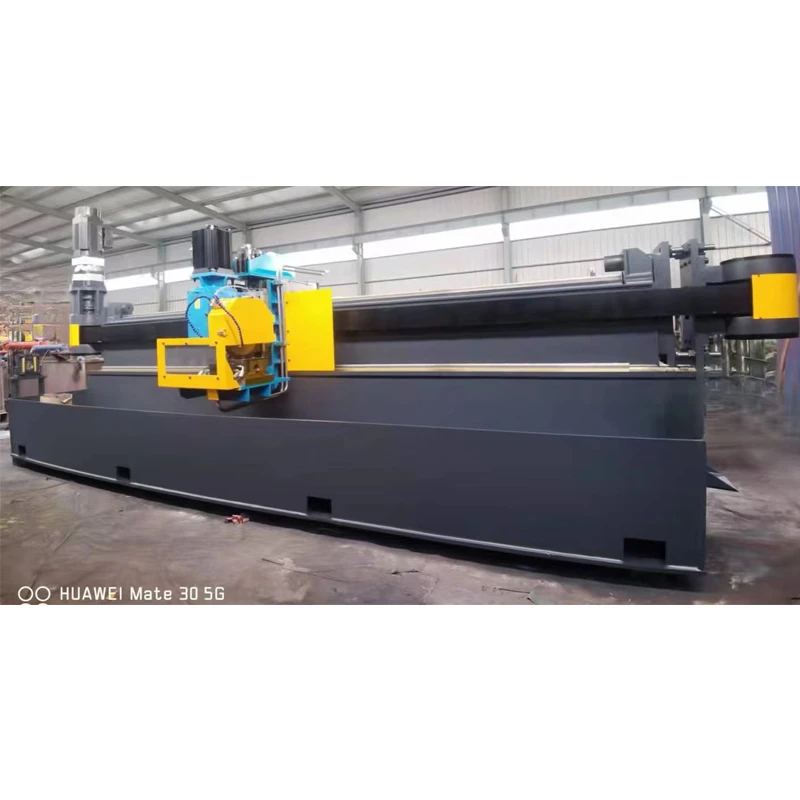Enhancing Tube Mill Production Efficiency and Quality in Manufacturing Processes
Understanding Tube Mill Machines A Comprehensive Overview
In the modern manufacturing landscape, tube mill machines play a pivotal role in the production of a wide array of tubular products used across various industries. From construction to automotive and energy sectors, these machines are integral to producing high-quality pipes and tubes efficiently. This article explores the operation, components, applications, and advancements in tube mill machines, providing a detailed insight into this essential piece of equipment.
What is a Tube Mill Machine?
A tube mill machine is designed to fabricate metal tubes and pipes from flat strips of metal sheets, primarily steel and aluminum. The process begins with feeding the flat material into the machine, which then gradually bends and rolls the metal into a cylindrical shape. This process is achieved using different sets of rollers, forming stations, and welding units. The final product can be used as structural components, automotive exhaust systems, or even medical equipment.
Key Components of Tube Mill Machines
1. Uncoiler This component holds and unwinds the metal sheet. It is essential for maintaining a constant feed into the tube mill machine and ensuring that the material is aligned correctly.
2. Forming Stations Tube mill machines consist of multiple forming stations, each comprising rollers that progressively shape the metal strip. These stations are vital for achieving the desired diameter and wall thickness of the tube.
3. Welding Unit After the metal strip is formed into a cylindrical shape, it is welded to create a continuous tube. Various welding methods can be employed, including high-frequency induction welding and TIG (Tungsten Inert Gas) welding, depending on the material and application requirements.
4. Sizing Section This part of the machine ensures that the welded tube meets the precise dimensions required for its intended use. The sizing section might include additional rollers to adjust the tube’s roundness and diameter.
5. Cooling System Post-welding, the tube often undergoes a cooling process to stabilize the material properties. Cooling systems are incorporated to manage the heat generated during welding and ensure product integrity.
tube mill machine

Applications of Tube Mill Machines
Tube mill machines are widely used across several industries
- Construction They produce steel pipes for structural use, such as scaffolding or support beams. - Automotive Manufacturers create exhaust pipes, chassis components, and other tubular parts that require strength and durability. - Energy In the oil and gas sector, tube mill machines are essential for fabricating pipes that transport resources across great distances. - Medical Precision tubes for medical devices and equipment require specialized tube mills for high precision and standards compliance.
Advancements in Tube Mill Technology
Recent technological advancements have significantly improved the efficiency and versatility of tube mill machines. Automation has become a crucial aspect, with computerized control systems allowing for enhanced precision and reduced lead times. Moreover, innovations in material processing and welding technologies have broadened the range of materials that can be used, including exotic alloys and high-strength steels.
Additionally, manufacturers are focusing on sustainability, developing energy-efficient machines and using recycled materials in their processes. The trend toward Industry 4.0 is also influencing tube mill machines, as they become more interconnected, allowing for real-time monitoring and predictive maintenance, thereby reducing downtime.
Conclusion
Tube mill machines stand as a cornerstone of modern manufacturing, facilitating the production of essential, high-quality tubular products across multiple industries. Understanding their operation, components, and advances provides insight into their significance in today’s industrial processes. As technology continues to evolve, so will the applications and capabilities of tube mill machines, ensuring they remain integral to manufacturing excellence in the future.
-
High Frequency Straight Seam Welded Pipe Production Line-BzZhou Xinghua Machinery Equipment Manufacturing Co., LTD.|Precision Welding, High EfficiencyNewsJul.30,2025
-
High Frequency Straight Seam Welded Pipe Production Line|BzZhou Xinghua|Precision Welding&EfficiencyNewsJul.30,2025
-
High Frequency Straight Seam Welded Pipe Production Line - BzZhou Xinghua|Precision Engineering&EfficiencyNewsJul.30,2025
-
High-Frequency Straight Seam Welded Pipe Production Line-BzZhou Xinghua Machinery Equipment Manufacturing Co., LTD.NewsJul.30,2025
-
High-Frequency Straight Seam Welded Pipe Production Line-BzZhou Xinghua Machinery Equipment Manufacturing Co., LTD.|Precision Manufacturing, High EfficiencyNewsJul.30,2025
-
High Frequency Straight Seam Welded Pipe Production Line-BzZhou Xinghua Machinery Equipment Manufacturing Co., LTD.|Precision Steel Pipe Manufacturing&Industrial EfficiencyNewsJul.29,2025


